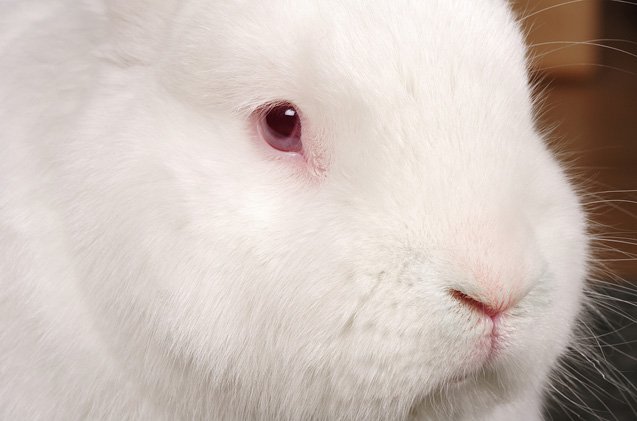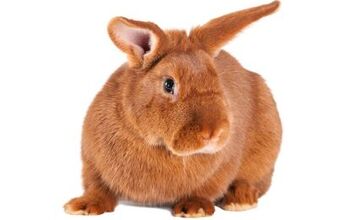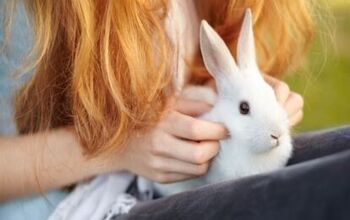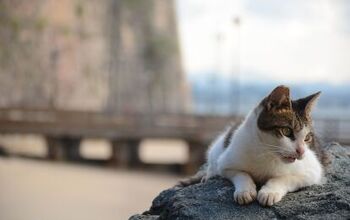New Zealand Rabbit


About New Zealand Rabbit
New Zealand Rabbit Breed History/Origin
This unique breed of pet rabbits has such an interesting background it almost equals their fantastic character traits. Although their name suggests it, these rabbits are not actually from New Zealand. In fact, they are the first American rabbit breed to be developed. At the beginning of the 20th century, American breeders crossed the popular rabbit types from the ‘old country’ in hopes to develop a meat-producing, show quality rabbit. By 1913, their crosses with genes of Belgian Hares and Flemish Giants were gaining popularity under the name of New Zealand Red Rabbit. Soon after, the albino sports of the breed were developed separately. The first litter of what will become New Zealand White rabbits were born in 1917 when a New Zealand Red doe had four albino kits. The striking beauty of these pure white sports with crimson eyes prompted the breeder to try and replicate them through selective breeding. After this, the rest is history. In just a few years, American breeders managed to come up with a new and distinct breed of rabbit that will become one of the most popular amongst pet owners – many decades down the road!
A universally well loved and unique rabbit breed, New Zealand Rabbits became very popular all across the United States. From there, it was only the matter of time when the breed would become successful all across the globe. Over time, many breeders tried to improve upon their qualities or selectively breed them for different purposes. This resulted in several subtle variations, mostly centered on coloration. Today, there are 5 distinct New Zealand Rabbit breeds that are recognized by ARBA. New Zealand Reds were recognized in 1916, New Zealand White Rabbit in 1920 and Black New Zealands in 1958. The newest additions to the breed are the broken variety, which was accepted by ARBA in 2010 and the blue variety which had the same luck in late 2016. It is not out of the realm of possibility that further variations of the New Zealand rabbit will come about, and be accepted by ARBA in the future. Either way, potential owners are given a great choice when it comes to different colors and appearances.
New Zealand Rabbits are large, muscular animals that have a beautiful coat.
Overall Description
The New Zealand has a rather well-rounded commercial body shape, which is slender yet muscular. In many ways, they have that iconic, unmistakable classic bunny look that is balanced and has great appeal to potential owners. This breed was primarily developed for the production of meat and their appearance shows it. From hips to loins to ribs, the New Zealand rabbit is a well-filled animal. Their head is moderately rounded, and in proportion with the rest of their body. Ears are thick, well-furred with rounded tips and carried erect. Does are bigger than bucks with a maximum weight of 10 to 12 pounds, where the male of the breed is supposed to weigh between 9 and 11 pounds. While the difference is not too great, you can still certainly tell which is the male and which is the female New Zealand Rabbit.
Coat
New Zealand rabbits have short, soft flyback fur that is set tightly in the pelt. Their coat does not need much grooming (as rabbits are generally clean animals), however, should you keep your New Zealand as a pet, you may find grooming them from time to time will reduce the amount of loose hair in your home. To boot, this will make sure your pet doesn’t ingest a lot of their own hair during self-grooming which can be dangerous for their health.
Grooming them once every week or biweekly with a bristled brush should do the trick. Always remember that rabbits should not be bathed, as this causes them great stress and may cause cardiac problems. Instead, if you do notice a bit of dirt on the paws or the rump, you should use a wet cotton ball for some gentle cleaning. It can do wonders for cleanliness and those pristine looks. No need to put your pet through stress or potentially cause them harm to keep them clean and hygienic!
Colors
The New Zealand rabbit has five colors that are recognized by the ARBA. These are red, white, black, blue, and broken, the latter being any color mixed with white. Each of the coat colors belongs to a separate variety of the breed. The New Zealand rabbit is quite the charmer! They are amongst the prettiest of all common rabbit breeds, and are definitely prized for their looks. This is great for potential owners who are picky about the colors of their rabbit. These looks are certain to satisfy most tastes, so no worries there.
Of course, if you want to maintain the elegance of their coat regardless of its color, you should adopt a steady grooming routine. Regular light brushing will be ideal to keep everything in order, and to get rid of any loose hairs, mats, and tufts. Just keep in mind that bunnies shouldn't really be washed.
New Zealand rabbits enjoy being handled and are rather easy-going.
Care Requirements
Like all rabbits, New Zealands need an adequate enclosure to eat, sleep, etc. Outdoor enclosures should be raised and have enough space for the rabbit to stretch their legs comfortably, hop about and sit up. Considering this rabbit’s size, their habitat needs to be rather large. As a rule of thumb, any New Zealand Rabbit will need an enclosure that’s 30” by 36”. Indoor rabbit enclosures should be made of sturdy wire all around, have a plastic or metal bottom and be large enough for the New Zealand rabbit to stretch out, just like outdoor enclosures. The bottom of their cages should be covered in rabbit-safe bedding, and it needs to be spot-cleaned every day and completely replaced at the end of every week. Hay, wood pellets, shredded paper, and sawdust are some of the most common choices for rabbit cage bedding.
In addition to spending time inside their spacious and comfortable enclosure, rabbits will also need to be let out to play on a regular basis. However, before you let your pet out, you need to bunny-proof the space they are going to be in. Indoors, remove any toxic house plants or foods your rabbit could get to, hide electric cables and protect wooden furniture legs your bunny will try to gnaw at. Outside, make them a pen that will keep them in a safe area, away from predators and without means to wander off. In both cases, you will have to supervise your bunny.
A New Zealand rabbit’s diet is no different than any other rabbit diet in that it should consist mainly of high quality hay. Most rabbit owners agree that timothy hay is the best bang for your buck, but orchard hay is also acceptable and the occasional alfalfa grass is also beneficial. The rest of the diet should be a good balance of fruits, leafy greens, vegetables, and pellets. Like hay, there are plenty of types of pellets available on the market, some with higher protein content than others. Of course, if you are ever uncertain of the type of diet you should offer your pet, don’t hesitate to contact your veterinarian. After a thorough checkup, they can get acquainted with your rabbit’s needs and prescribe the ideal diet that will keep them as healthy as ever.
Be aware of what kind of fruits, leafy greens, and vegetables you have in your home as some are rabbit-safe and others are not. In fact, most leafy greens are unsafe as they can cause digestive issues, especially if you feed your rabbit a large amount of it. Feed your rabbit greens that are high in fiber and nutrients, such as romaine lettuce, and be aware of what kind of fruits you’re feeding (apples are a wonderful choice). Don’t hesitate to get acquainted with the best greens for rabbits – so you should not feed them something that’s not good for them.
Health
Thankfully, the New Zealand rabbit is not susceptible to any particular disease or health problems, however there are some things potential rabbit owners need to watch out for. Overgrown teeth, for example, is a common problem in pet rabbits which is mostly diet-related. Rabbits must have a diet high in hay, as the hay is responsible for keeping their teeth at a manageable length (unlike cats and dogs, a rabbit’s teeth never stops growing throughout its life). Should your rabbit’s teeth overgrow, they may grow into their jaw and face, causing immense pain. Make sure to take a peek inside your bunny’s mouth about once every week or so to make sure this is not a problem.
De-worming paste is also a must for indoor or outdoor rabbits to keep them worm-free. A pea-sized amount twice a year should be sufficient. Indoor/outdoor New Zealand rabbit owners should also check its ears weekly, as ear mites can develop. There is a also painful condition called flystrike that can occur (mostly with outdoor rabbits) that happens when flies lay their eggs in soiled fur (mostly around their bottoms). Once the eggs hatch, their main source of nutrition is your rabbit’s insides and this causes them excruciating pain. Should you suspect your rabbit is suffering from flystrike, take them to your local veterinarian immediately to get treated.
Bucks can be neutered as young as three and a half months old while does should wait until they are six months old to be spayed. The New Zealanders are docile and calm rabbits to start with, so the main benefit of fixing them is not to minimize aggressiveness. If your rabbit is not going to be used for breeding, sterilization has other important consequences besides preventing your pets from producing more rabbits. Neutered males are less likely to mark with urine and females will have a lower risk of getting uterine cancer. Spaying and neutering can also influence longevity, with “fixed” bunnies tending to live a few years longer than others. So, if you want your tiny bunny friend to stay with you for longer, don’t hesitate to proceed with the neutering. It might not be the natural state for a bunny, but it certainly is beneficial to them.
The New Zealand rabbit is great as a pet – it is generally good with children and other pets.
Temperament/Behavior
Because the New Zealand rabbit was developed to be meat/fur producers, they are generally docile and easy to handle. However, should you decide to keep a New Zealand as a pet, they are generally good with children and other pets so long as they are given time to properly socialize at a young age. They enjoy being handled and are rather easy going, which makes them a great family pet for couples who have younger or older children. A bunny that has been neglected in those early formative days won’t do well in big crowds and around people and kids. They can become scared, timid, and anxious, and that’s never good. To prevent this, make sure that your little bunny is surrounded by loving, careful, and positive people that will understand its frailty and treat the rabbit with love and care. In the long run, this approach will do wonders for the behavior of your rabbit pet! This breed of rabbit is not known to bite, kick or be overall aggressive and loves to be picked up or held on laps while they are petted and loved – they are even sometimes called “rag dolls” because they flop like an actual rag doll wherever you set them down.
While they are not known to bite, all rabbits should be given a few toys they can happily chew, nibble and gnaw in order to reduce boredom and possibly keep their teeth nice and short. Depending on your rabbit’s personality, this can be as simple as an empty rule of kitchen paper towels to as complex as a mental stimulation pet toy from your local pet store.
While not the easiest indoor pet to train, it is indeed possible to litter train a rabbit. Many owners find having several litter boxes spread across the home is a necessary evil in order for their indoor rabbit not to leave their droppings all over their home. They also find that if their rabbit is prone to doing the deed in one particular corner, they place a litter box in that corner so the rabbit can make the connection and understand that they should be doing their business in the box. With lots of time, patience and a few treats, litter training should be successful within a few months.
It is interesting to note that rabbits – New Zealand breed in particular – are ideal as comfort and companion pets. From seniors looking for some mellow and cuddly company in their retirement days, all the way to single owners looking for a friendly companion to share their small home or apartment with, the New Zealand rabbit comes as an ideal candidate. That is because these bunnies have quite a decent life expectancy when rabbits are concerned: 5 to 6 years! And when they are spayed and neutered, this lifespan can be extended all the way up to 10 years. A decade for a pet bunny is quite a solid number, and you can expect to share many adventures and cuddly moments with your little furry friend. Perfect if you want a companion that is not high maintenance but has a lot to offer. Shower them with love and affection, and they will have no problem creating that firm bond with you and becoming a very loving companion.
Of course, this can only be achieved with your help and care. A rabbit will depend on you for many things, since they are quite fragile and tiny things! Regular vet checkups, a good diet, and good hygiene are just some of the crucial things a rabbit owner needs to take care of. Once you establish a solid foundation in terms of health and care, you can rest assured that they will easily reach their max life expectancy. With plenty of love and care, you can rest assured your pet will thrive under your care for many years.
All in all, the New Zealand rabbit is one of the perfect examples of what a pet rabbit should be. They are perfectly balanced in every regard – from looks to health, and down to their character. So, when you take into account all this, and their great character traits, you can quickly realize that these bunnies make fantastic household pets that are loving, easy to care for, and endlessly fun! What more can you ask for?
Photo credit: Shafiqul Islam/Flickr; Kalulu/Bigstock

More by Diana Faria

























